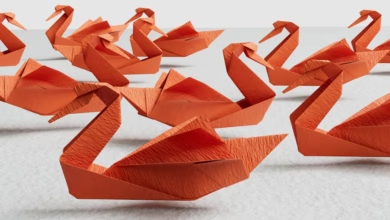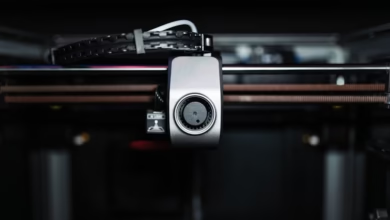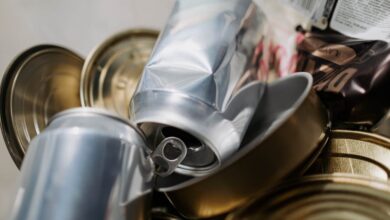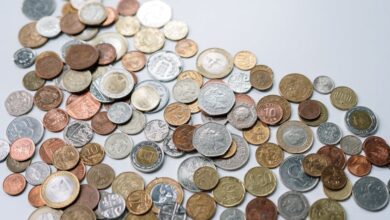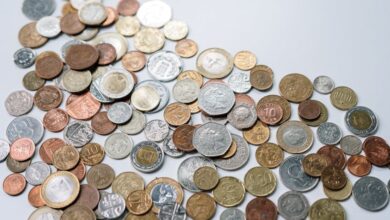Metal Recycling: Key Processes and Emerging Market Trends in Precious and Industrial Metals

As global awareness of environmental sustainability grows, metal recycling has emerged as a critical component in the journey toward sustainable metal production. The processes involved in recycling scrap metals not only help reduce the demand for metal mining but also play a vital role in conserving precious resources. This article delves into the intricacies of metal recycling, exploring how various ferrous and non-ferrous metals—such as steel, aluminum, copper, and zinc—are transformed from scrap into valuable resources that can meet the demands of modern industries. With a focus on current market trends in both precious and industrial metals, including gold and silver investing, we will examine the evolving landscape of metal commodities. Finally, we will look toward the future of metal recycling, highlighting innovations in metallurgy and the revolutionary impact of 3D printing metals on the recycling industry. Join us as we uncover the essential role of metal recycling in shaping a sustainable future and its significance across various sectors, from automotive to aerospace and beyond.
- 1. Understanding the Metal Recycling Process: From Scrap to Sustainable Production
- 2. Current Market Trends in Precious and Industrial Metals Recycling
- 3. The Future of Metal Recycling: Innovations in Metallurgy and 3D Printing Metals
1. Understanding the Metal Recycling Process: From Scrap to Sustainable Production
Metal recycling plays a crucial role in promoting sustainable production by transforming scrap metals back into usable materials. The process begins with the collection of various types of metals, which can be broadly categorized into ferrous and non-ferrous metals. Ferrous metals, primarily composed of iron, include materials like steel, while non-ferrous metals encompass a diverse range of materials such as aluminum, copper, zinc, and precious metals like gold and silver.
Understanding the metal recycling process involves several key stages. Initially, collected scrap metals are sorted based on their type and composition. This sorting is vital as it ensures that different metals can be processed efficiently. Advanced technologies, including magnetic separation for ferrous metals and eddy current separation for non-ferrous metals, facilitate this step.
Once sorted, the metals undergo shredding, where they are broken down into smaller pieces to make processing easier. The subsequent step often involves melting the metals in large furnaces, where temperatures are carefully controlled to achieve the desired metallurgical properties. This process allows for the removal of impurities and the production of high-quality metal alloys, essential for various applications, including construction metals, automotive metals, aerospace metals, and energy metals.
After melting, the molten metal is cast into bars or ingots, ready for further processing or fabrication. This stage is crucial for manufacturing products ranging from jewelry metals to industrial applications. The resulting materials are often used in new metal commodities, significantly reducing the need for metal mining and the associated environmental impact.
In recent years, there has been a growing trend towards recycling rare earth metals and battery metals, driven by the increasing demand for technology and renewable energy solutions. The rise of 3D printing metals has also introduced new opportunities for utilizing recycled materials in innovative ways, further enhancing the sustainability of metal production.
Overall, the metal recycling process contributes not only to the conservation of valuable resources but also to the reduction of metal corrosion and waste. By adopting sustainable practices in metallurgy and embracing the circular economy, the industry can ensure a steady supply of base metals while minimizing the ecological footprint of metal fabrication and production. As consumers and investors become more aware of the benefits of recycling, gold investing and silver investing are also seeing increased interest, highlighting the importance of recycling in today’s economy.
2. Current Market Trends in Precious and Industrial Metals Recycling
The landscape of metal recycling is continually evolving, driven by both economic factors and growing environmental concerns. Current market trends reflect a robust demand for both precious and industrial metals, as industries increasingly recognize the importance of sustainable metal production. The global push for sustainability is particularly evident in the recycling of ferrous and non-ferrous metals, such as steel, aluminum, copper, and zinc. These metals are essential in various sectors, including construction, automotive, and aerospace, where their properties can significantly enhance product durability and performance.
In the realm of precious metals, gold and silver investing remain popular, with an increasing proportion of these metals sourced from recycled materials. The jewelry metals market, in particular, is witnessing a shift as consumers become more conscious of the environmental impact of mining. This awareness is also pushing for greater transparency in the sourcing of metals, leading to a rise in recycled options.
Moreover, the demand for rare earth metals—crucial for high-tech applications such as electronics and renewable energy technologies—has surged, making their recycling increasingly vital. As industries expand their use of battery metals like lithium and cobalt for electric vehicles, metal recycling processes are adapting to recover these materials efficiently.
Metal trends indicate a growing interest in metal alloys and refractory metals, which are critical in high-performance applications. The integration of 3D printing metals is transforming the way these materials are produced and recycled, allowing for more efficient use of raw materials and promoting circular economy practices.
Overall, the market for metal commodities is becoming more interconnected, with innovations in metallurgy and metal fabrication driving new recycling techniques. As the industry embraces these changes, metal corrosion and degradation are being addressed through advanced recycling methods, further enhancing the lifecycle of these vital resources. The future of metal recycling not only promises economic benefits but also contributes significantly to environmental sustainability, making it a key component in the global push towards greener practices.
3. The Future of Metal Recycling: Innovations in Metallurgy and 3D Printing Metals
The future of metal recycling is poised for transformation, driven by innovations in metallurgy and the rise of 3D printing metals. As the demand for sustainable metal production increases, the recycling of both ferrous and non-ferrous metals becomes essential for meeting industry needs while minimizing environmental impact.
Advancements in metallurgy are allowing for more efficient extraction and processing of various metals, including precious metals like gold and platinum, as well as industrial metals such as aluminum, copper, and zinc. Innovative techniques are being developed to enhance the recovery of rare earth metals and battery metals, which are crucial for modern technologies, including energy storage solutions and electric vehicles.
In parallel, the growth of 3D printing metals is revolutionizing the way we manufacture and utilize metal components. This technology enables the creation of intricate designs and complex metal alloys that were previously challenging to fabricate. Industries such as aerospace, automotive, and construction are increasingly adopting 3D printing to produce lightweight, durable parts from recycled metals, thereby promoting metal recycling and reducing reliance on virgin metal mining.
Moreover, the integration of metal recycling with 3D printing presents unique opportunities for gold investing and silver investing, as investors seek to capitalize on the rising value of recycled precious metals. The ability to produce high-quality components from recycled materials not only supports sustainable practices but also helps stabilize metal commodities markets by reducing volatility associated with traditional mining.
As the focus on sustainable practices intensifies, the metal trends in recycling are evolving. The emergence of refractory metals and corrosion-resistant alloys is enhancing the longevity and performance of recycled products in various sectors. This is particularly important for construction metals and energy metals, where durability is paramount.
In conclusion, the future of metal recycling is bright, driven by innovations in metallurgy and the incorporation of 3D printing technologies. These advancements are set to redefine the landscape of metal fabrication, ensuring that both base metals and precious metals are utilized efficiently and sustainably, ultimately benefiting the environment and the economy alike.
In conclusion, metal recycling stands at the forefront of sustainable production and resource management, transforming scrap metals into valuable commodities. The processes involved, from the initial collection of ferrous and non-ferrous metals to the final stages of metallurgy and fabrication, play a crucial role in supporting the growing demand for precious and industrial metals. Current market trends highlight the increasing importance of recycling not only base metals like steel, aluminum, and copper but also rarer materials such as lithium, platinum, and palladium. As industries from construction to aerospace seek sustainable alternatives, innovations in metal recycling—particularly in 3D printing metals—are reshaping the landscape of metal fabrication.
Investors are increasingly recognizing the value of metal commodities, including gold and silver investing, as essential components of a diversified portfolio. As we move towards a future that prioritizes sustainability, the focus on efficient metal recycling processes will become even more critical in reducing metal corrosion and minimizing the environmental impact of metal mining. By staying abreast of emerging metal trends, stakeholders can contribute to a circular economy that not only conserves resources but also supports the growth of green technologies in sectors such as energy and automotive. Ultimately, embracing the potential of metal recycling will pave the way for a more sustainable and resilient future.

